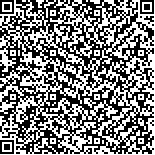本文已被:浏览 882次 下载 415次
Received:June 29, 2021 Published Online:January 20, 2022
Received:June 29, 2021 Published Online:January 20, 2022
中文摘要: 目的 探讨抗N-甲基-D-天冬氨酸受体(NMDAR)脑炎的临床特点及治疗预后。
方法 收集 2018年12月至2020年6月于北京朝阳中西医结合急诊抢救中心神经内二科诊治的12例抗NMDAR脑炎患者的临床资料,回顾性分析其一般资料、脑脊液检测、抗NMDAR抗体检测、影像学表现、脑电图表现及治疗预后。
结果 12例患者中男性3例,女性9例;年龄15~59(33.14±5.47)岁。起病形式多呈急性或亚急性,临床表现为有前驱感染症状4例,精神行为异常12例,认知障碍9例,癫痫发作6例,意识障碍4例,言语障碍3例,自主神经功能障碍3例。脑脊液检测: 压力升高8例,白细胞数升高10例,蛋白升高8例。抗NMDAR抗体检测:脑脊液抗NMDAR抗体阳性12例,血清抗NMDAR抗体阳性4例。影像学检查:头颅MRI增强扫描结果异常8例,其中颞叶内侧6例、岛叶4例、额叶3例(有的患者异常部位多处)。胸部及全腹CT检查发现异常1例,提示卵巢畸胎瘤。脑电图检查:轻度异常5 例,中度异常2例,重度异常1 例,主要表现为局灶性或弥漫性慢波节律。治疗预后:多数患者使用糖皮质激素、免疫球蛋白等免疫治疗,其中1例转外院行畸胎瘤切除术。症状完全恢复7例,复发1例,遗留癫痫发作4例。
结论 抗NMDAR脑炎临床表现复杂,对于出现不明原因的精神行为异常、认知障碍、癫痫发作等患者,应及早行脑脊液抗NMDAR抗体筛查,同时排除潜在肿瘤,确诊后尽早启动免疫治疗。
Abstract:Objective To explore the clinical features, treatment and prognosis of anti-N-methyl-D-aspartate receptor (NMDAR) encephalitis.
Methods The clinical data of 12 patients with anti NMDAR encephalitis treated in Beijing Chaoyang Integrative Medicine Emergency Medical Center from December 2018 to June 2020 were collected and analyzed retrospectively, including the general data, cerebrospinal fluid (CSF) detection, anti-NMDAR antibody detection, imaging findings,electroencephalographic (EEG)manifestations and treatment prognosis.
Results There were 3 males and 9 females, aged 15-59(33.14±5.47) years old.Most of patients were at acute or subacute onset with clinical manifestations of precursor infection symptoms in 4 cases, mental behavior abnormalities in 12 cases, cognitive impairment in 9 cases, epileptic seizure in 6 cases, consciousness impairment in 4 cases,speech impairment in 3 cases and autonomic nerve dysfunction in 3 cases. CSF detection showed 8 cases with elevated pressure, 10 cases with elevated leukocyte number and 8 cases with elevated protein. The detection of anti NMDAR antibody showed 12 cases were positive for anti-NMDAR antibody in cerebrospinal fluid, and 4 cases were positive for anti-NMDAR antibody in serum. Head magnetic resonance imaging (MRI) enhanced scanning showed abnormalities in 8 cases, including 6 cases of medial temporal lobe, 4 cases of insular lobe and 3 cases of frontal lobe (some patients had multiple abnormal sites). CT examination of the chest and the whole abdomen suggested ovarian teratoma in one case. EEG showed 5 cases of mild abnormality, 2 cases of moderate abnormality and 1 case of severe abnormality, mainly manifested as focal or diffuse slow-wave rhythm.After treated with glucocorticoid, immunoglobulin and other immunotherapy, one case was transferred to another hospital for teratoma resection. There were 7 cases with complete recovery, 1 case with recurrence and 4 cases with residual epileptic activity.
Conclusions The clinical manifestations of anti-NMDAR encephalitis are variable. For patients with unexplained mental and behavioral abnormalities, cognitive impairment, epileptic seizures, etc., detection of anti-NMDAR antibody in CSF should be performed as soon as possible to initiate immunotherapy early after diagnosis. Meanwhile, the potential tumors could be identified.
keywords: Anti-N-methyl-D-aspartate receptor encephalitis Clinical features Cerebrospinal fluid Imaging Treatment Prognosis
文章编号: 中图分类号:R742 文献标志码:B
基金项目:
引用文本:
